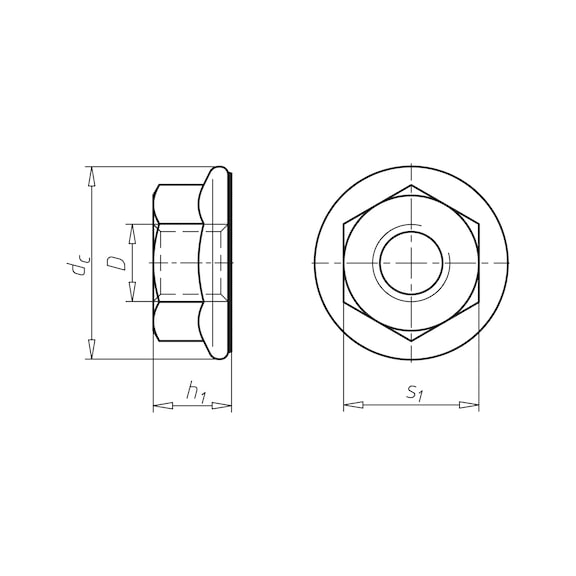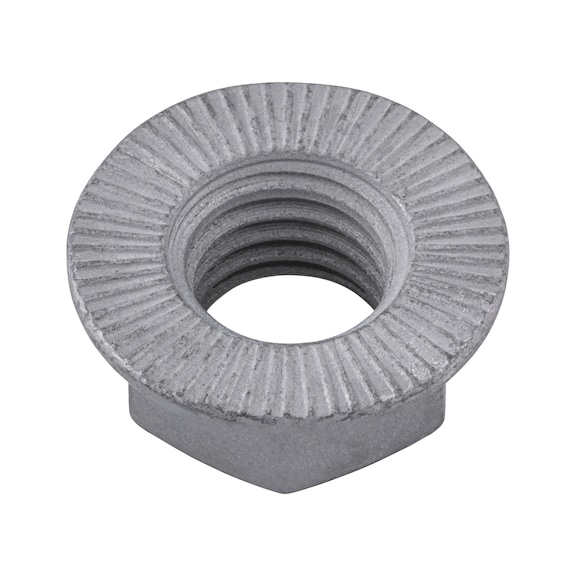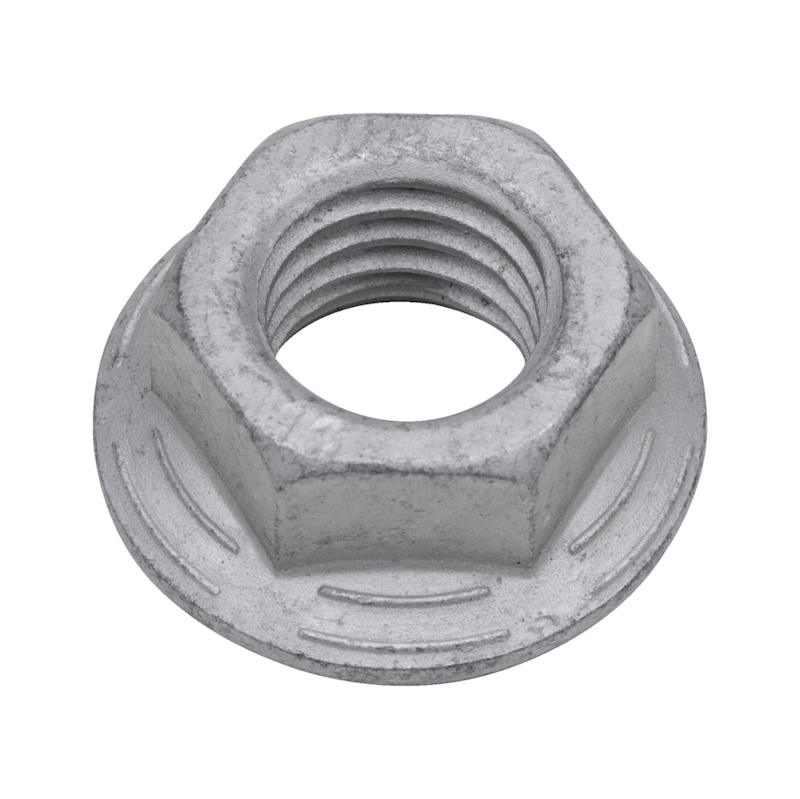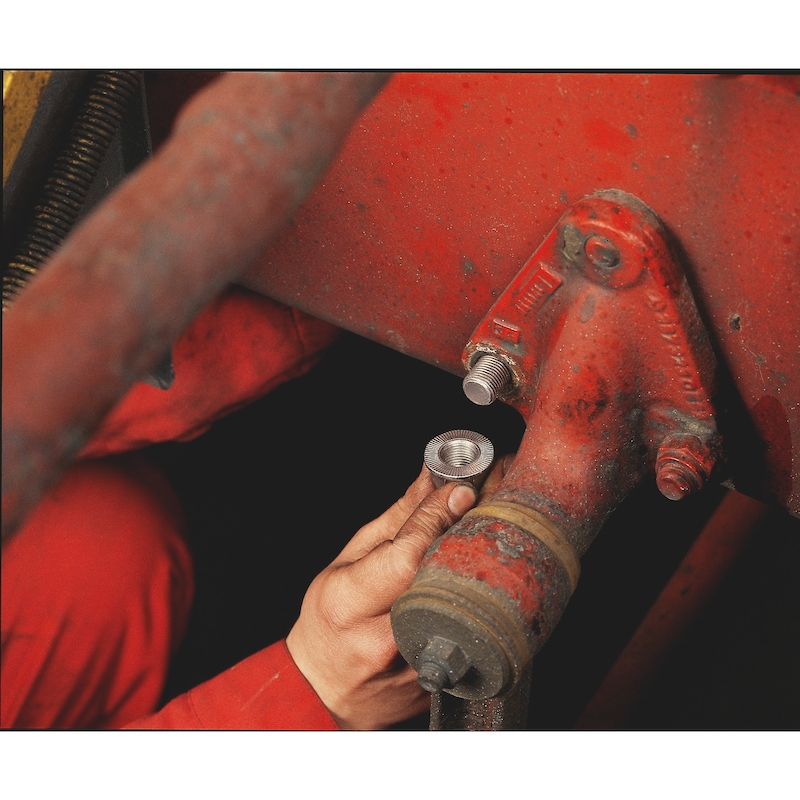For detailed information, other images and documents, please select individual articles from the following table.
Ribbed nuts
Serrated flange nut, steel, strength class 10, zinc-flake coating, silver (ZFSHL)
Register now and access more than 125,000 products
Variants
Register now and access more than 125,000 products
Call customer service: 073 – 629 1911
Prices for customers after login
Standard metric thread
Strength class 10
For screws up to strength class 10.9 and ripp locking screws with strength class 100
Surface
- ZFSHL: Zinc flake coating with lubrication that alters the friction coefficient (friction coefficient: 0.09–0.14)
- for M5 zinc nickel, transparent passivated (P3E) with sealing
Chrome(VI)-free
Complies with the EU End of Life Vehicles Directive
Corrosion resistance
M5 with (P3E) approx. 600h/≥ M6 approx. 480h/≥ M10 approx. 720 hours of base metal corrosion according to DIN EN ISO 9227-NSS
Working principle of locking ribs
During tightening, the locking ribs roll the counter-material in the area of the nut contact surface. This causes a plastic deformation that hardens the surface. No significant settling is determined at the end of tightening. The locking ribs limit the amount of settling of the connection and therefore reduce the loss of pretensioning force.
The specified corrosion resistances apply for the corrosion tests according to DIN EN ISO 9227-NSS (salt spray mist testing), at the earliest 24 h after coating in the "as coated" state, i.e. before sorting, packaging, transporting and/or assembly. These values can be reduced through inevitable handling and assembly processes. A transfer of the corrosion resistances from the salt spray mist test to real assembly and operating conditions is not possible in the majority of cases. When designing a connection, both the combined materials and any coatings and the environmental conditions during operation must be considered by the designer when selecting a suitable corrosion protection coating.
Select RAL-colour code
!! NOTE: On-screen visualisation of the colour differs from real colour shade!!













